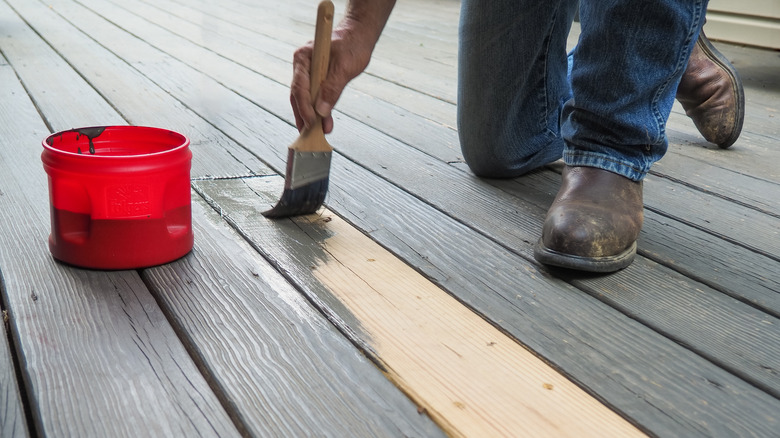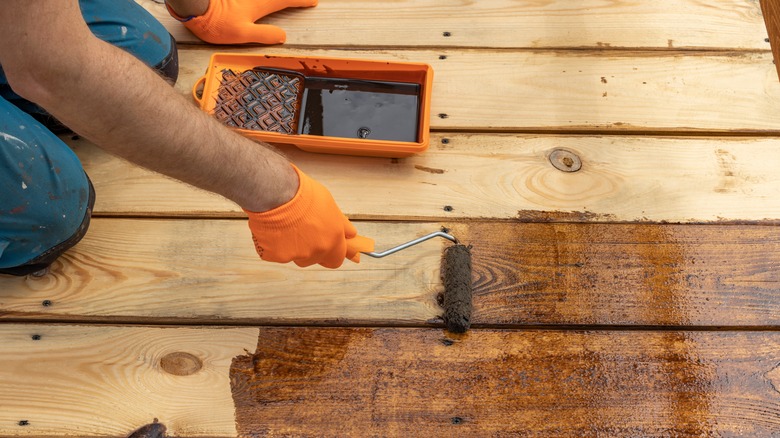Why You Should Think Twice Before Painting Your Deck
It might be tempting to give your deck a fresh coat of paint, but there are several reasons why this could be detrimental to your outdoor space. Most importantly, paint is not a viable long-term option. While the wear and tear your deck endures will depend on your climate and location, it is not uncommon for moisture to get trapped underneath the layer of paint. Rather than offering a protective coating against the elements, paint can backfire and cause rotting under the surface. Another con is that it is difficult to reverse. Once you paint your deck, it is very costly to remove the paint and start over. If you've already painted your deck, you must strip the paint and sand your deck down the correct way before resealing or staining.
In addition to the practical reasons, there are several aesthetic downsides to painting your deck. Paint will conceal the wood's natural variation, obscuring its organic beauty. You may regret damaging the real hardwood instead of highlighting its natural features. Over time, some paint may crack or bubble, creating an uneven surface physically and visually. Alternative sealing methods, like staining your deck rather than painting it, can actually enhance the warmth and character of hardwood, instead of covering it.
Consider staining as a preferable alternative to painting
Although painting can cause long-term damage, that doesn't mean your deck should remain unsealed. Staining is typically a more secure alternative to painting. Not only is staining a tried-and-true way of keeping your deck looking fresh, but it can actually prevent rotting and deterioration. It's also a reliable method for protecting your deck from both harsh sunlight and heavy moisture.
You can choose between an oil and water-based deck stain, depending on the state of your deck and your overall goals. While oil-based stains are typically easier to apply, they need to be re-applied more often. Oil-based stains were also the industry standard prior to the introduction of water-based stains. They are reliable and resistant to peeling. On the other hand, water-based stains are becoming increasingly common due to their safer, less hazardous makeup. They are typically free from the harsh chemicals in oil-based stains that can penetrate your wood. Because they sit on the surface of the wood, you can easily remove them if needed.

